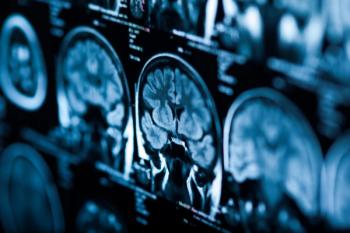
Does bilateral oophorectomy impact dementia rates?
Bilateral oophorectomy is associated with an increased risk of dementia, according to findings from a prospective cohort study in the journal Menopause.
The study did not reveal an association between unilateral oophorectomy and dementia.1
Investigators were unable to determine whether the connection between bilateral oophorectomy and dementia was conditional on hysterectomy or the use of hormone therapy (HT).
“Although an increase in dementia after bilateral oophorectomy is biologically plausible, limited statistical power hampers the precision of the estimates,” they wrote.
The study followed 24,851 female nurses from the Danish Nurse Cohort (DNC) from age 60 or entry into the cohort, whichever came last, beginning in 1993. The women were followed up with until their date of dementia, death, emigration, or the end of follow-up in December 2018.
During 334,420 person-years of follow-up, 5% of the nurses developed dementia.
A nurse diagnosed with dementia was generally more likely to be a previous smoker, non-alcohol drinker, of older menarche age (12 years or older), nulliparous, and diagnosed with depression prior to dementia. She was also less likely to have used hormonal contraception at baseline than a nurse not diagnosed with dementia.
Overall, 7.9% of nurses contributed with person-time after bilateral oophorectomy versus 4.1% of nurses who contributed person-time after unilateral oophorectomy.
Among nurses who underwent bilateral oophorectomy, 19.1% were younger than 51—a proxy for premenopausal—at the time of the procedure, and 80.9% were at least 51 years old.
In contrast to nurses without oophorectomy, a nurse with bilateral oophorectomy was more likely to have a BMI >30 kg/m2, low-to- moderate physical activity, never smoke or drink, an earlier age at menarche, nulliparous and an HT user.
A nurse with unilateral oophorectomy was prone to be nulliparous, have a high BMI, use HT, be a current smoker and drink alcohol heavily—more than 14 units per week—but have a high level of physical activity.
In total, 81.1% of women with bilateral oophorectomy had a hysterectomy, representing 6.4% of the study population.
In adjusted analyses, there was an 18% higher rate of dementia after bilateral oophorectomy and a 13% lower rate following unilateral oophorectomy compared to nurses who retained their ovaries.
Similar effects were found after stratification, according to age at oophorectomy, but no statistically significant modifying effects of hysterectomy or HT were discovered (Pinteraction ≥ 0.60).
“The increased rate of dementia following bilateral oophorectomy is biologically plausible and might be explained by the permanent loss of ovarian sex steroids after oophorectomy with a concomitant loss of neuroprotection from estrogen,” wrote the authors.
The investigators expected postmenopausal bilateral oophorectomy to not impact dementia rates because the decrease in circulating estrogen is much less pronounced when surgery occurs after menopause compared to premenopausal oophorectomy. However, they found the highest dementia rates in postmenopausal oophorectomized women.
Because postmenopausal ovaries continue to produce androgens which are mostly aromatized to estrogens, the authors deem it biologically feasible that postmenopausal bilateral oophorectomy might increase dementia risk, although it is counterintuitive that premenopausal oophorectomy would be linked to lower rates of dementia than postmenopausal oophorectomy.
“This may relate to the precision of the estimates with wide confidence intervals that overlap between the two age groups,” the authors wrote.
Other studies have come to conflicting conclusions, so it remains difficult to determine possible association between oophorectomy at any age and risk of dementia.
Reference
- Uldbjerg CS, Wilson LF, Koch T, et al. Oophorectomy and rate of dementia. Menopause. Printed online January 31, 2022. doi:10.1097/GME.0000000000001943
Newsletter
Get the latest clinical updates, case studies, and expert commentary in obstetric and gynecologic care. Sign up now to stay informed.











